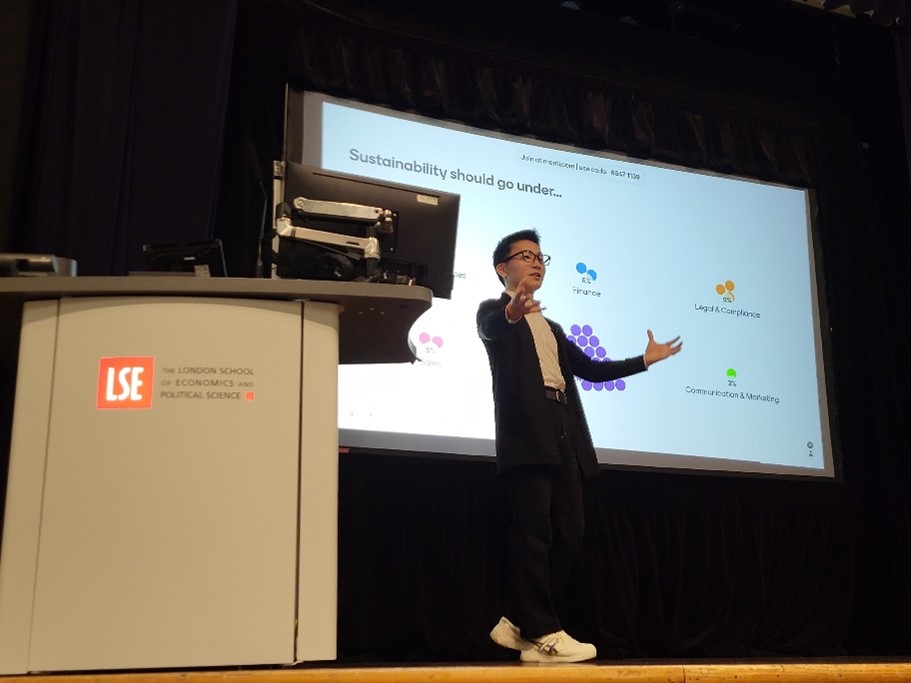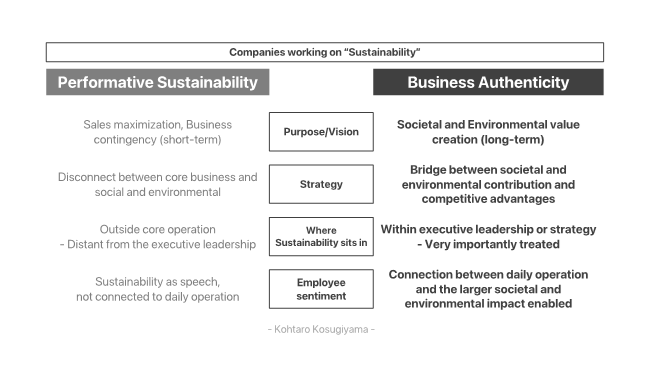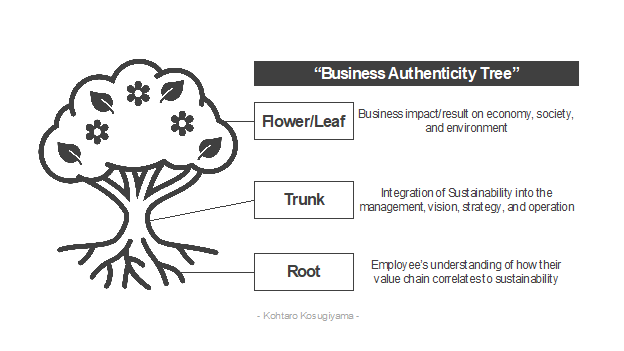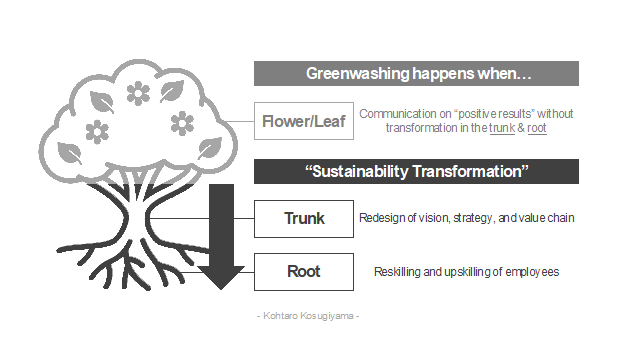This article features content shared at a guest lecture for MG104 Operations Management where Kohtaro shared content and theories from his 2022 publication, which have become more relevant amid the turbulence in corporate sustainability. His theories and models have been acknowledged and adopted by listed companies, local governments, regional small to medium enterprises, and professional sports teams that the author worked with as a consultant.
I asked a class of BSc Management students, “Is sustainability dead?”. Their responses were a good mix of “yes” and “no”.

Personally, I agree with people who think that sustainability is dead. Who would have thought one year ago that major companies would openly withdraw from the climate pledge or pull back their sustainability efforts? With all the ESG frameworks triggering a global movement, had anyone thought that corporate sustainability would be challenged?
However, I would add one word to complete my sentence: “performative” sustainability is dead. In reality, 2025 is the long-awaited year when authentic sustainability becomes more alive than ever. I invite all of us to question what kind of role sustainability should play in companies and the larger society.
Has sustainability become a break in business?
During my work as the internal Head of Sustainability for The Adecco Group Japan and as an external sustainability strategy and transformation consultant, I often heard honest opinions from people. “I understand it is important, of course, but if it doesn’t commit to sales growth, how can I buy the argument?” “Sustainability people tell us what we cannot do, but not what we can do instead.” “We don’t disagree with them, we believe it’s very important. But a company can’t exist if its finances are not in the right shape.” All these comments come from the presumption that pursuing sustainability fundamentally contradicts the pursuit of maximized financial gain. However, I disagree; these claims persist because we simply don’t have enough businesses and CEOs that can bridge those two seemingly conflicting perspectives and practice authentic sustainability.
I call a firm’s effort to authentically integrate sustainability into its performance “business authenticity,” hoping to remove the negative connotations the term “sustainability” has acquired due to the performative action of some corporations. But what does “business authenticity“ look like, and can it be achieved while avoiding performative sustainability?
Performative sustainability vs business authenticity

Whether companies can achieve business authenticity depends on four pillars: Purpose/Vision, Strategy, Function, and Employee engagement. These represent various key elements of successful corporate management, and by assessing how they integrate sustainability into those pillars, we can assess a company’s business authenticity.
Most companies have a purpose or vision that indicates the “why” of their businesses. A simple question to ask here is: Do they tell you what kind of society they aim to achieve through their core operations? Companies ought to share this in their visions as a blueprint.
While many firms have the first checkbox ticked, not many have strategies that translate their aspiration to numbers. Companies that have a separate sustainability agenda from their strategies tend to fall into the trap of “vision vs. number.” Successful cases should highlight the bridge between the enablers of the corporate vision and the sources of their competitive advantage.
It is also helpful to look at where management places sustainability in its structure. Sustainability is a rare function that can go under any department, and where the function is placed tells us how companies interpret sustainability. If the function is placed to have influence on 1) executive decision-making and 2) strategy, that is a good sign. If the function is placed in an environment where it can receive the order but cannot advocate for necessary change in business practices, this becomes the cause of performative sustainability.
And finally, companies cannot exist without their employees; is internal communication and skilling done in a way where employees see the connection between what they do and the impact they create? We often hear employees saying that sustainability is just the marketing campaign, but as highlighted by the famous ‘janitor at NASA’ story, when workers understand how their input ignites collective impact, it not only increases engagement but overall business performance.
Each element is equally important when discussing companies’ overall performance. When firms have a strong long-term vision, a strategy that translates it to practical KPIs and differentiators, a function well positioned to drive transformation, and well-engaged workers, their financial performance is expected to be sustainable. Hence, business authenticity, the authentic implementation of sustainability, is something everyone in business ought to pursue.
“It’s as simple as a tree!”
Checking all four elements is not easy, especially when implementation and execution require a significant transformation effort. Companies with limited resources or under financial pressure become performative in meeting regulatory requirements and market expectations.
But there is another way to look at business authenticity: a tree. Trees grow when their roots are deeply set, their trunks are thick and well nourished—as a result, they produce fresh leaves and flowers. To produce beautiful flowers, it takes years to deepen the roots and thicken the trunk.

Imagine this as a company. The flowers/leaves are the business impact and result on the economy, society, and environment, the trunk the core activities such as management, strategy, and operations, and the roots are employee engagement. Most companies fall into the trap of capturing the close-up of flowers that bloomed beautifully without paying attention to the weak roots and the trunk. It takes time, but to avoid performative sustainability and achieve business authenticity, firms must transform core operation and empower their workers.
The job descriptions and mandates for Chief Sustainability Officers varies company by company. The ultimate goal of a CSO is to assess and visualize how the firm is doing as a tree, assess its strengths and weaknesses, initiate and execute business transformation efforts, and finally report the results and impact to society.

The complexity of the mandate justifies the increasing demand for sustainability scholars, consultants, and experts. However, many CSOs face resource shortages amid a lack of leadership buy-in or financial tightening. As Head of Sustainability, with strong leadership support, yet a limited budget, I had to expose myself to theories and practices on strategy, management, organizational transformation, and even marketing to ensure that our corporate sustainability enabled business authenticity.
CSOs need not only technical knowledge but also emotional intelligence (EQ). EQ is essential in understanding stakeholders’ different perspectives and translating sustainability into their languages to achieve business authenticity successfully.
It seems that, ultimately, the CEO’s job is the CSO’s job, which is why 2025 is the year of natural selection for CEOs and CSOs.
While some might say it all sounds too idealistic, I’d argue that idealism has shown us room for growth and innovation, and now is the right time to seek authentic innovation in the way we do business.
- The post represents the views of its author(s), not the position of LSE’s Department of Management or the London School of Economics.
The post Beyond performative sustainability: Why business authenticity is the way forward first appeared on LSE Management.
